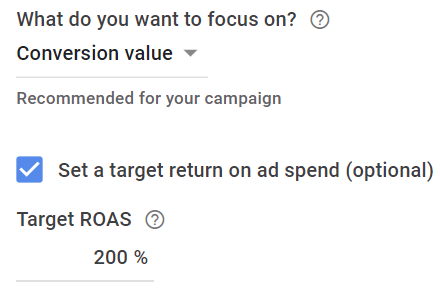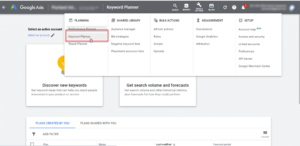Automation in search engine marketing is ever advancing, especially when it comes to your campaign’s bidding strategy. Google smart bidding has been around since 2016 and has continuously improved over the years to become even smarter and more effective at driving your business goals.
Let’s dive into what smart bidding is, how it compares to other bidding strategies, and break down smart bidding’s pros and cons so you can decide which strategy is worth your time and effort.
What Is Smart Bidding?
Smart bidding strategies use advanced machine learning and auction-time bidding to optimize your campaign(s) for conversions or conversion value. Google’s smart bidding technology is able to consider when, where, and how much to bid based on the likelihood of achieving a conversion. And it’s able to do it instantly, every time.
Factors (“signals”) such as a user’s location, device, day, and time are all considered to determine what your bid should be in that specific scenario. Also, once the smart bidding algorithm has gathered enough data, it can automatically place bid adjustments (increased or decreased) on those signals to optimize your campaign toward the conversion actions you’ve set and are most valuable to you.
These strategies are a solid option for your search campaigns, and they’re equally as effective in improving performance for other types of campaigns. If your business goals include increasing sales, leads, or return on ad spend, then you should consider using these strategies. Because these strategies are geared toward optimizing conversions, you will need to ensure that conversion tracking is set up.
Types of Smart Bidding Strategies
- Maximize Conversions: This strategy optimizes your bids toward the conversions you’ve set up as the primary conversion actions you would like a user to take. This could be filling out a form or making a purchase. This option tries to make use of your entire budget, so you could see a spike in spending after making the switch.
- Maximize Conversions w/ TCPA (target cost-per-conversion): You’re able to set a target amount you’re willing to spend per conversion. Google will still try to get the maximum amount of conversions possible with your budget and attempt to stay within your target CPA.
- Maximize Conversion Value: Google will try to get you the most revenue from your conversions possible for the overall budget you’ve allocated to your campaign.
- Maximize Conversion Value w/ Target ROAS (return-on-ad spend): Similar to TCPA, this option lets you set the goal return on ad spend you would like.

Bidding Options: Smart vs. Automated vs. Manual
“Wait a minute! Smart bidding sounds pretty automated. What’s the difference?” Glad you asked! There are other “automated” and “manual” options. Let’s start with automated.
Automated Bidding
Smart bidding is technically a sub-category of automated bidding. Think about it like every square is a rectangle but not every rectangle is a square. Smart strategies are part of the automated strategies family, but not all automated strategies are “smart.”
The goals for other automated strategies are increasing website traffic/visits (clicks) and ad visibility (impressions). Automated strategies (smart or not) ease the burden of you trying to factor in all the possible signals to optimize campaigns to meet your business goals. It is impossible for any human to replicate the accuracy, swiftness, and efficiency that an automated bidding strategy is capable of.
Types of Automated Strategies
- Maximize Clicks: This strategy tries to get you as many clicks as possible (drive traffic to your website) within your allocated budget. It’s also a good option to start with for new campaigns that don’t have enough conversion data for max conversions and can switch once enough data is collected.
- Target Impression Share: The goal of this strategy is to improve the visibility of your ads. When setting this up, you indicate where you want your ad to appear (absolute top of the page, top of the page, anywhere on the page) and the percentage of the time you would like it to appear there.
Manual Bidding
Now let’s dive into manual bidding. Just as it sounds, this strategy requires some manual labor with a side of digit dexterity on your part. You set the max you’re willing to spend per click (CPC) for your keywords, whereas automated/smart strategies set the cost-per-click for you.
The perk: retaining more control. The pitfall: dedicating the time and resources to figuring out when, where, and how you should be bidding. Even then, you’re not able to make those strategic, in-the-moment, auction-time decisions like smart bidding.
Imagine you have five campaigns with two ad groups per campaign, and each ad group contains 10 keywords. That’s 100 keywords and a ton of auctions. That’s a lot of effort, sweat, and maybe some tears to put forth on manual work when you could be allocating it towards strategy instead. Focusing on strategy is going to help your digital marketing efforts much more in the long run.
Smart Bidding Pros
- Auction-Time Bidding: With this feature, you’re able to focus on other business objectives and goals, while smart bidding does all the heavy lifting. It analyzes a plethora of signals for each unique auction, so you’re always optimizing towards driving the conversions most important to you.
- Advanced Machine Learning: The life-long learner. The algorithms are constantly learning and help predict what’s going to be the most effective way to generate conversions within your budget by utilizing recent and historical data it’s collected.
- Saved Time & Efficiency: Your time is valuable, especially when you’re running a business with a host of other objectives and tasks to keep you more than busy. Even if you did carve out some time to run your SEM campaigns, it wouldn’t be humanly possible to match the efforts of smart bidding.
Smart Bidding Cons
- Lack of Control: There’s always a trade-off. While it’s wonderful that smart bidding takes the wheel for you in certain ways, you aren’t retaining as much control of your campaigns. Smart bidding makes some decisions for you, but it’s still imperative to continuously examine things like the keywords you’re using, what search terms they’re pulling in, and adding to your negative keyword list when applicable.
- Set It & Forget It Mentality: With your campaigns zipping along on a smart strategy, time can get away from you, especially if you’re a business owner tackling this by yourself. For truly effective performance, it’s still very important to keep tabs on what’s happening in your account and adjust where needed. Smart bidding needs you to make it even smarter about how to achieve your business goals.
- Learning Period: This is supposed to last about seven days. However, each campaign is a unique flower, so this could take longer. If it’s a fresh account, you can expect at least seven days, perhaps more. If you already have a sizeable amount of conversion data stowed away, you could have a shorter wait time.
What Bidding Strategy Should You Use?
Like anything else, there are pros and cons to the bidding strategy you choose to use. What’s important is to identify your business and marketing goals. Then you can begin determining which strategy is going to be the right fit. And not every campaign needs to have the same bidding strategy set. Smart bidding automation has come a long way since it first launched and, much like your campaigns, is always being optimized. Whether you’re looking to increase conversions, conversion value, website traffic, or visibility, there is a strategy that can help you do it effectively and efficiently.
The post What Is Google’s Smart Bidding & Should You Use It? appeared first on Portent.




